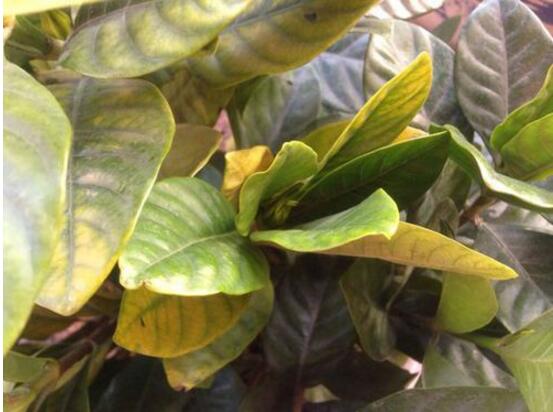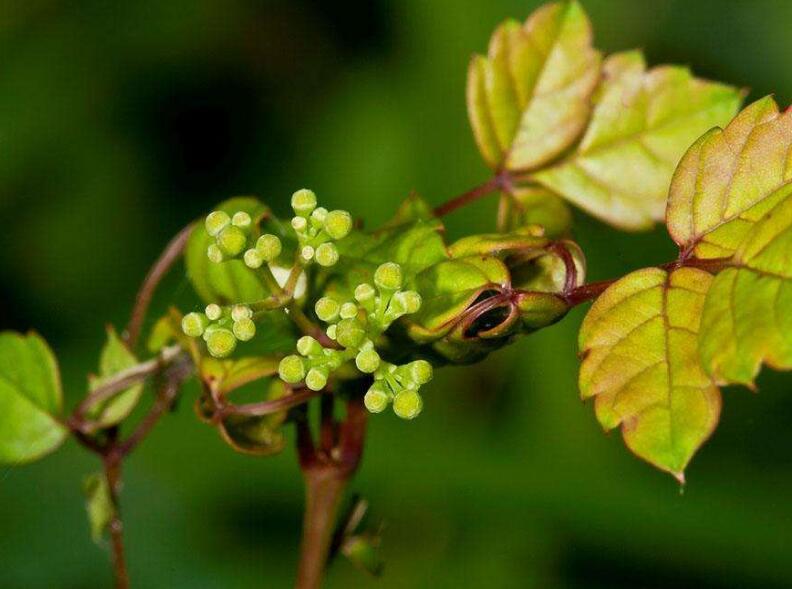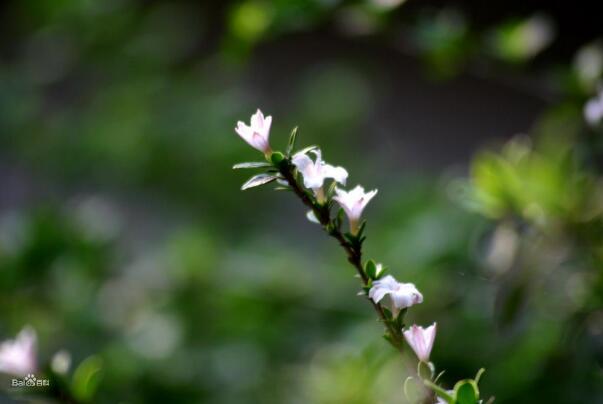What if the leaves of Jiujie orchid turn yellow? pay attention to these 5 points to solve easily / too much water and too little light
Jiujie orchid is a kind of plant planted in the homes of many aquaculture lovers, which has a very high ornamental value. However, for plants with high ornamental value, the yellowing of leaves will also affect its beauty as a whole. What about the yellowing of the leaves of Cymbidium? Next, the editor will take you to learn about it.

What if the leaves of Cymbidium turn yellow?
If you want to know what to do with the yellowing of orchid leaves, you must first know what caused it. Only by finding the cause can you solve it. This phenomenon may occur in light, improper watering, diseases and insect pests and so on. As for how to solve it, let's move on.
1. Keep ventilated
If the orchid is allowed to grow in an unventilated environment, it will cause the leaves to turn yellow, so the environment must be ventilated in the process of breeding, so this can effectively avoid this problem.
two。 Apply less fertilizer
Although fertilizer is one of the main nutrients of Cymbidium, there is still one thing to pay attention to when applying fertilizer, that is, it must be diluted before applying fertilizer, otherwise it will burn the plant and cause the leaves to turn yellow.
3. Controlled water quantity
When watering Jiujie orchid, we must according to the environment. In summer, the weather is hot and the water will volatilize. At this time, we can choose to increase the watering frequency, on the contrary, we should reduce the amount of water when the winter weather is colder.
4. Control lighting
Spring and autumn are the more suitable growing seasons for Cymbidium, and it doesn't matter if you can put it outside all day to receive light, but when the summer light is too strong, especially at noon, it should be moved to indoor semi-shade for breeding. otherwise, it is easy to yellowing leaves.
5. Control of diseases and insect pests
The emergence of diseases and insect pests is also one of the reasons for the yellowing of Cymbidium leaves, so we must be careful in the process of maintenance. On this issue, you can refer to the nine-section orchid pest control article, which has a detailed solution.
In fact, as long as you pay attention to the problems mentioned above in the process of breeding Jiujie orchids, there is generally no yellowing of leaves. On the nine-section orchid leaves yellowing how to do the problem Xiaobian introduced here, I hope to bring you some help.
Tips for growing flowers in cold weather
The Spring Festival is coming soon, and many citizens will buy some flowers and plants to decorate their homes. So, what kind of flowers are suitable for growing in winter? If there is a cold wave, how to take care of these flowers? To this end, the reporter invited Li Jiao, the greening nurse of Nanning people's Park, and Ali, who has more than 10 years of flower-growing experience, to give advice to everyone.
The moral of Camellia: the love virtue of modesty and ideal
Camellia likes a warm and humid environment. If it doesn't encounter a rare cold wave, Nanning's winter is also very suitable for growing camellias. Camellia has a variety of varieties, rich colors and a long flowering period. It will bloom from October to May of the following year. Put a pot of beautiful colors, often blooming camellias in the balcony is a good choice.
Nursing: newly bought camellias do not need to rush to water and fertilize, first wait for a period of time and then according to the growth of camellias, properly water camellias; after the flowering period, all the branches of camellias should be trimmed once, with each branch trimming about 2 centimeters, which is conducive to its branches growing denser and blooming more flowers in the coming year; if camellias grow well, they do not need to apply fertilizer frequently, they can be fertilized again at intervals of three or four months or even more than half a year.
The moral of orchid: beautiful, noble and virtuous
There are many varieties of orchids, most of which have a faint aroma. Because of their elegant design and high ornamental value, they have been deeply loved by the Chinese people since ancient times. The cultivation of orchids in China has a long history, and the common orchid varieties are monopolized spring, spring orchid and nine-section orchid and so on.
Nursing: in winter, the watering times of orchids can be appropriately reduced, but the flowerpots should not be watered until they are thoroughly dry; if you encounter more seasons of Rain Water, the orchids should be moved back indoors to prevent the leaf surface or roots from rotting; fertilizing once a month, you can use Amoy rice water mixed with some compound fertilizer in the flowerpot.
The moral of sweet-scented osmanthus: loyal people are strong and unyielding.
Sweet-scented osmanthus is suitable for planting in a ventilated and transparent place, and has a pleasant fragrance, which is very suitable for planting on the balcony. Friends can choose four seasons osmanthus, four seasons osmanthus blossoms all the year round, especially in February and March, its flower fragrance is the lightest among many sweet-scented osmanthus varieties, the flowers are slightly white and the leaves are thinner.
Nursing: you can spray water on the leaves every one or two days, and spray water droplets on the leaves to keep the leaves moist and clean the dust adsorbed on the leaves; there are more rainy days in Nanning in winter, which not only need less watering, but also prevent the sweet-scented osmanthus pots placed on the balcony from accumulating water, once the accumulated water can easily lead to sweet-scented osmanthus root rot.
The implication of four Seasons Begonia: Acacia, Care and sincerity
Begonia is the most common and cultivated species of begonia. Its leaves are delicate and bright, the flowers are in clusters, and the flowers are orange, pink, pink and white. They can blossom almost all the year round, but they are more popular in late autumn, winter and spring. Four Seasons crabapple itself with fragrance, put on the balcony decoration effect is very ideal.
Nursing: compared with other plants, the cold resistance of four seasons begonia is not high, so when there is a cold wave or frost, it is necessary to move the four seasons crabapple back to the house and put it in a ventilated and luminous place, if it is placed on the outdoor balcony, the whole film can be wrapped with a piece of plastic film before going to bed at night, and the film will be removed the next morning. You can cut a larger plastic bag and make a simple film to cover the four seasons crabapple.
The implication of getting rich is to attract wealth and advance treasure.
With the Spring Festival approaching, many citizens will choose to buy a fortune tree to go home in order to get a good jackpot. The fortune tree likes the sunshine, the vitality is exuberant, also suits to put on the balcony. However, the more the Spring Festival comes, the more cautious it is to buy rich trees, because some businesses will sell rich potted plants whose branches have been dried or whose roots have just sprouted. When these rich trees are brought home, they often die quickly because of unstable roots. Therefore, when buying wealth trees, the color of the leaves is dark green is the best, followed by whether the soil is new soil, press the soil with your hand to see whether it is tight, whether the soil has signs of loosening.
Nursing: after buying back the fortune tree, some citizens continue to fertilize it in order to make it grow better. This is a mistake because merchants have been fertilizing continuously during planting in order to maintain the foliar effect of the plant. After taking the rich tree home, you should first let the fertilizer on the leaves of the plant be consumed. After a period of time, the plant can not be fertilized until it has adapted to the environment at home.
Tips for growing flowers in cold weather
● doesn't need to be watered too often, especially for indoor plants. Indoor plants are generally lack of light, frequent watering will accelerate the yellowing of plants, watering once or twice in half a month to a month.
● do not often move flowering plants indoors. Some people are afraid that their plants will be frozen, so they move them indoors for several days, and sometimes even forget to move out, which is not good for the plants. Flowering plants, especially potted plants with dense flowers, depend on light if they want to bloom well.
When ● encounters a cold wave, after moving foliage plants indoors, sun-loving plants should be placed in a sunny place, while shade-tolerant plants should change their orientation regularly. No matter what kind of plants, we should often open windows for ventilation, so that plants gradually adapt to the indoor environment temperature.
- Prev

How to deal with the yellowing of clematis leaves / pay attention to 5 points to solve easily
Clematis is a common plant in people's life today, which has high ornamental value. However, if a beautiful plant turns yellow, it will also affect its overall beauty, and clematis is no exception. What about the yellowing of clematis leaves? let's take you to know about it.
- Next

What about the snow and yellow leaves in June? pay attention to yellowing at three o'clock / too strong light and too little water.
June snow, flowers, such as its name, has a pure white color, very lovable, coupled with its green leaves, the viewing is really amazing. However, no matter how beautiful the plant is, due to improper maintenance, there will also be symptoms of yellow leaves, so what about the snow-yellow leaves in June? In fact, it is very simple to find the cause of the yellowing of the leaves.
Related
- Fuxing push coffee new agricultural production and marketing class: lack of small-scale processing plants
- Jujube rice field leisure farm deep ploughing Yilan for five years to create a space for organic food and play
- Nongyu Farm-A trial of organic papaya for brave women with advanced technology
- Four points for attention in the prevention and control of diseases and insect pests of edible fungi
- How to add nutrient solution to Edible Fungi
- Is there any good way to control edible fungus mites?
- Open Inoculation Technology of Edible Fungi
- Is there any clever way to use fertilizer for edible fungus in winter?
- What agents are used to kill the pathogens of edible fungi in the mushroom shed?
- Rapid drying of Edible Fungi

